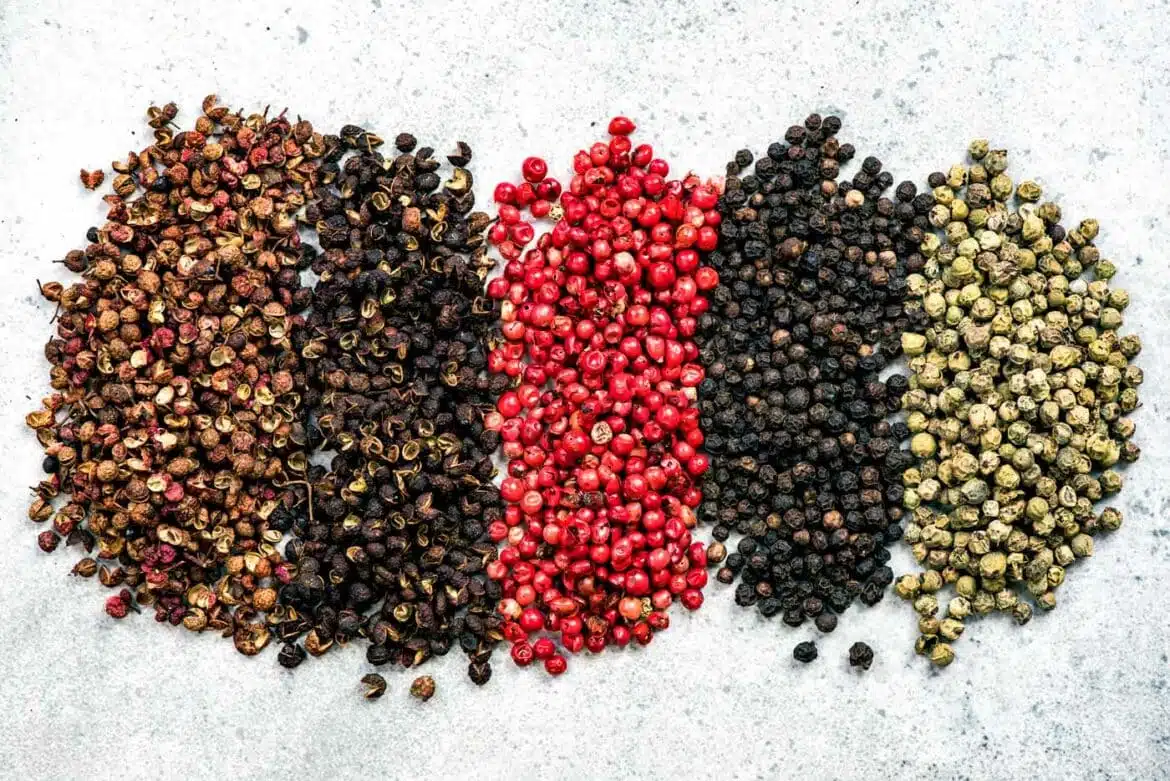This post is also available in: ![]() Deutsch
Deutsch ![]() Français
Français
There’s more to pepper than black or white. Pepper comes in a range of flavours ranging from sweat-inducingly spicy to lemony-sweet.
In German, the term “Pfeffersack” which translates to as much as “pepper bag”, is by no means a flattering remark. It means to be a snooty scrooge. However, in the medieval Hanseatic times, the name was a clear indication of how merchants had acquired their immense wealth.
By the mid-16th century, exotic seeds, fruits and barks were so popular in Europe that the pepper price in Antwerp was considered to be an indicator of the general European business climate. In much of Europe, merchants recognised pepper and salt, as a means of payment to settle taxes, rents and dowries. Shareholders who invested in the United East India Company in the 17th century, received their dividends in pepper.
These spicy berries are considered to be one of the oldest seasonings known to humankind. Archaeologists found peppercorns in the mummy of Pharaoh Ramses II’s nose – likely so that the ruler would not be without them in the afterlife.
Pepper is a perennial climbing plant which can grow up to ten meters high. This makes harvesting all the more challenging and complicated, especially for varieties that grow in the wild.
Today, the spice is mostly grown on plantations, especially in India, Malaysia, Indonesia, Brazil or Cambodia. However, pepper originally comes from the Malabar coast in the province of Kerala in southwestern India. The ancient Romans are said to have landed there with crates full of gold in order to trade the precious metal for sacks full of valuable pepper – at least that’s what an Indian historian once noted.
Doctors acknowledged the power of the little black grains long before chefs did. Piperine, an alkaloid found in pepper, is responsible not only for its distinct spiciness, but also for its health benefits. It is considered to have anti-inflammatory and antioxidant properties, and protects the body. More than 2,000 years ago, the Greek Hippocrates, knew that pepper stimulated digestive juices and recommended adding it to broths and wine. It was recognised as a health-benefiting spice in India too. The advice for sore throats was to chew on three peppercorns and slowly swallow the juices.
In European households and restaurants, pepper was used widely in the 20th century as a grey, pre-ground powder in cooking and as table seasoning.
These days, anyone who wants to be considered a connoisseur not only offers a variety of coloured peppers, but also has black, white and green grains from various origins in their spice cupboard. Furthermore, there is a distinction to be made between wild harvest pepper and plantation pepper. (see box)
For the best flavour, the peppercorns should be crushed in a mortar and then used as seasoning.

Pepper is available in black, green, red and white.
Traditional black pepper is still the favourite amongst the majority of people, and the most aromatic by star chefs. However, as is the case with top-notch wines, the same applies to good pepper: It depends on where it’s grown.
Black pepper is harvested when it’s still green and unripe, and it gets its black hue from the fermentation and drying process. Green pepper is also harvested when it’s unripe, but it is immediately pickled in brine or dried. It is rather mild.
The fully ripened berries are the red peppercorns, and these are extremely rare. They are briefly boiled in water to preserve their colour and then they are usually brined.
With white pepper, the red husk is removed from the kernel after harvest.
The Tellicherry pepper is a very special variety, although botanically it is not a of a different variety. It is also known as the “late harvest pepper,” as the very ripe, red grains are fermented, giving the Tellicherry a brown tint and its characteristic reddish glow. It is named after a large trading port on the Malar coast of India, formerly called Tellicherry, but today known as Thalassery. Many top chefs consider Tellicherry to be the crowning glory of all peppers – partly because the berries stay on the plant longer than most other varieties, making them much bigger.


